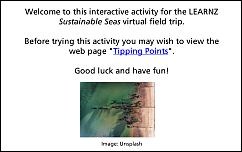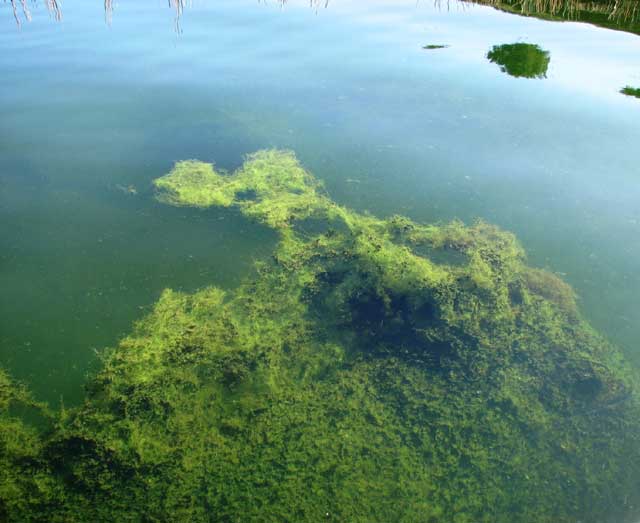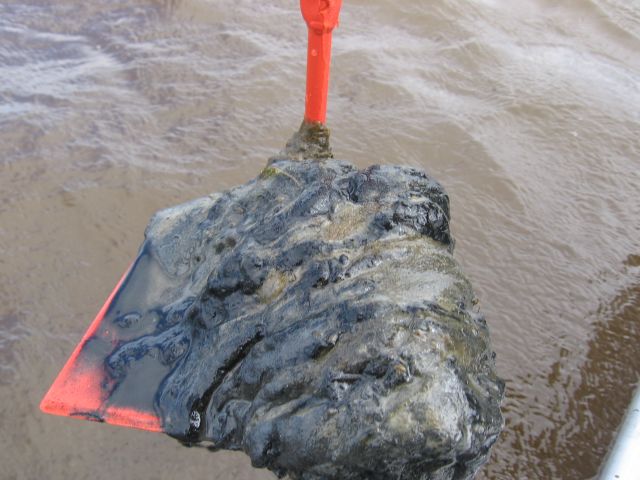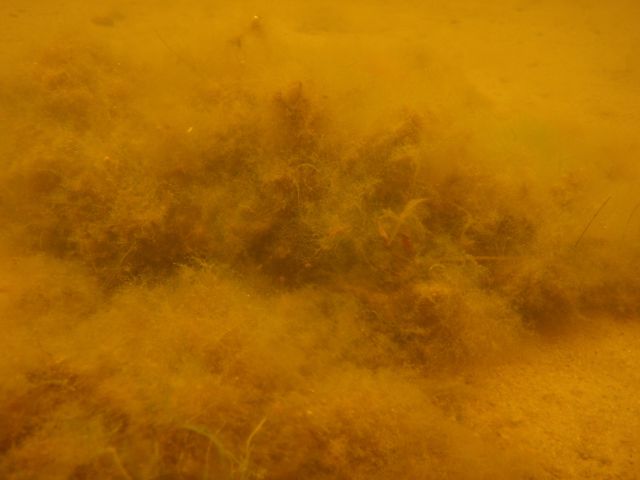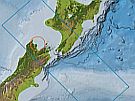Tipping points are a quick and unexpected shift that happens when an ecosystem fails to cope with increasing change. The ecosystem ‘tips’ from one state to another. Once an ecosystem 'tips' it works in a totally different way. This new state usually has less variety of plants and animals than the ecosystem it replaces.
Large natural events such as earthquakes or volcanic eruptions can cause tipping points. People can also cause tipping points. An example would be an oil spill which changes the marine ecosystem.
More important are the tipping points that occur when a number of small changes combine to cause a large, sudden change in a system. This sudden change cannot be linked to one cause.
For example, ‘eutrophication’ could cause a lagoon to flip from a healthy waterway with lots of fish, sea grass and good water quality; to a murky waterway, with lots of algal growth, few fish and poor water quality. Eutrophication can happen as nutrients build up overtime in the water until the lagoon can no longer cope.
Eutrophication happens when a waterway receives too many nutrients; usually from fertilizers from farming or from sewage. The extra nutrients lead to too much growth of algae. When the algae has used up all the nutrients it dies, and is broken down by bacteria that use oxygen. This lowers oxygen levels, killing other plants and animals that cannot live without oxygen.
Once an ecosystem ‘tips’ it can be very hard or impossible to reverse.
Why don’t we avoid tipping points?
The problem is that often our ecosystems are not easy to understand and are affected by many different things. To try and stop tipping points we need to look at all the factors that could affect the ecosystem, which is a big job.
Coastal ecosystems are always changing with the tides, weather and seasons, and people can add to these natural stressors. Coastal ecosystems are at risk because they are used by many different people. Activities on land, sometimes far from the coast, can cause changes to estuaries and the ocean.
Marine ecosystems ranging from estuaries to open ocean have tipped in different places around the world.
These shifts affect ocean food webs, habitats and how an ecosystem works. This can affect people, for example a tip in an estuary that provides kaimoana can affect peoples' well-being and livelyhood.

National experiment
Tipping points have happened and can happen in New Zealand waters. The Sustainable Seas National Science Challenge is working on New Zealand’s first marine experiment in estuaries, harbours and rocky reefs throughout the country. This experiment is looking at marine tipping points, the risks and how coastal ecosystems respond to change.
The researchers are studying nutrient and sediment runoff, as they are two of the biggest impacts on our coasts. 22 sites in estuaries and harbours across Aotearoa have been selected with different levels of sediment. The team has buried slow release fertiliser at each site to see what happens when nutrient levels increase. The sites are being monitored for 1–2 years to see how worms and shellfish are affected.
Worms and shellfish affect estuary health. More worms and shellfish mean there are more microbes in the sediment to process nutrients.
This is just one of 39 Sustainable Seas projects.

